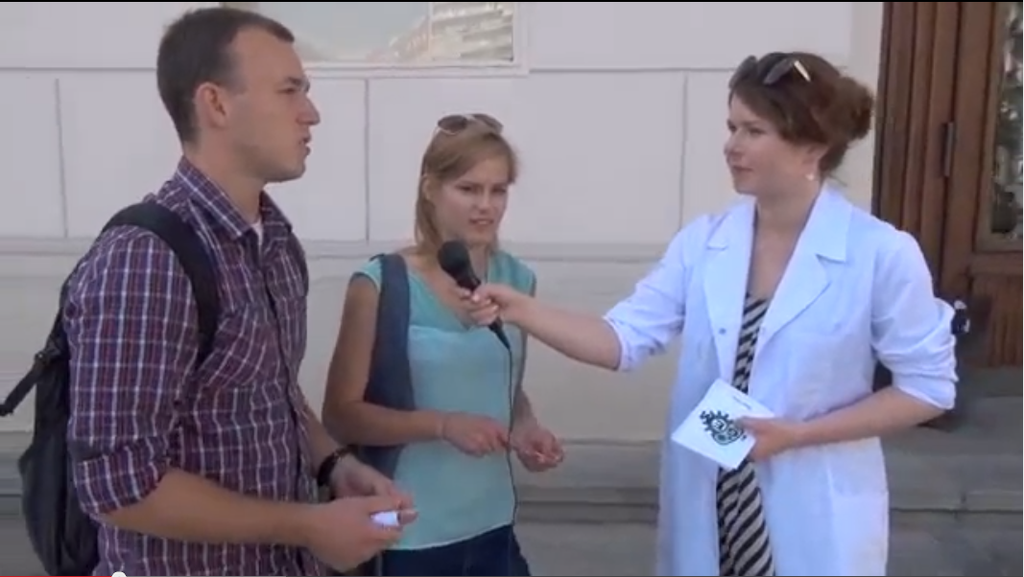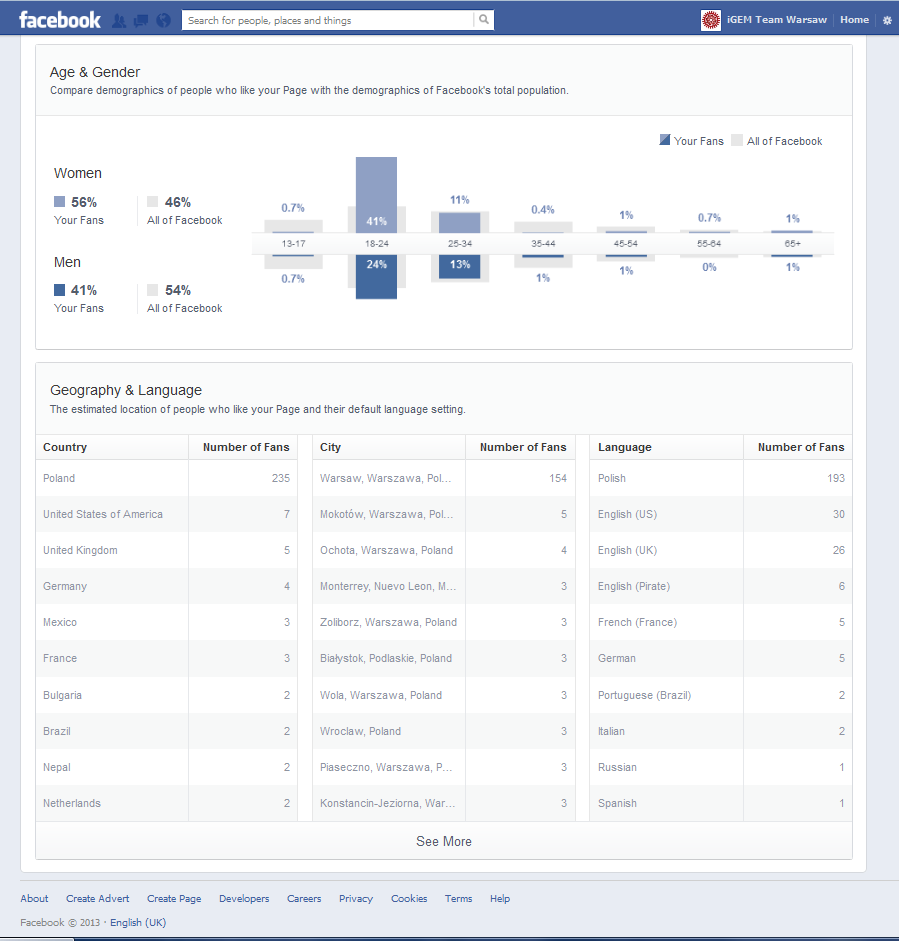Team:Warsaw/Strategy overview
From 2013.igem.org
| Line 91: | Line 91: | ||
| - | [[File:Podsumowanie face.png| | + | [[File:Podsumowanie face.png||right|Alt=A|]] |
Revision as of 21:21, 4 October 2013
Strategy Overview
Why you’d better learn more about synthetic biology?– FluoSafe strategy overview
WHAT SEEMS TO BE THE PROBLEM?
GMO discussions are heated and controversial all over the world. However, according to a survey conducted this year by TNS Pentor for the Copernicus Science Center in Warsaw 66% of adults with Polish citizenship have no idea what GMO actually is... When respondents were asked to give an example of such organism, the most common answers were soya, rapeseed, corn and … cows (23%)! On the opposite of only 30% of those interviewed knew that Escherichia coli can be modified to produce insulin. 60 % of the people surveyed knew that GMO law is different in every country.
WE ASKED OURSELVES…
…So how can we discuss new biotechnologies applications, medical engineering and innovations in synthetic biology with other people if they don’t exactly know what it is?! Thus the FluoSafe Human Practice part has become a chance to change this situation, an opportunity to educate society and to react to the most common fears connected with the use of genetic engineering and synthetic biology in general.
WHO WAS OUR TARGET?
It is difficult for us (young students) to talk with elder people that have authority (because of their age). so we decided to get the attention of young polish people. When they become future politicians, journalists, managers and above all consumers they should be aware of the technologies that are surrounding them to make decisions correctly. Although according to a Millward Brown survey more than 63% Polish students appreciate the influence of genetic engineering which is more than among their older relatives, even this kind of results aren’t good enough for us.
WHY DID WE CHOOSE ACRYLAMIDE AND BIOSAFETY AS OUR HUMAN PRACTICE MAIN THEME?
We knew we wanted to convey a message: products of biological engineering can be safely used in everyday life. There are plenty of topics you can talk about with your friends, but one of them appears always- food. So our next thought was: what if we can design a bacterial sensor helping people to make their diet more healthy and safe? What should those bacteria do? Acrylamide, which is both a carcinogen and a neurotoxin present in some thermally processed food, seemed to fit perfectly. Everybody loves cakes, roasted meat, crisps!
WHAT HAVE WE DONE TO MAKE YOUNG PEOPLE IN POLAND MORE AWARE?
The Science Picnic of the Polish Radio and the Copernicus Science Centre -15th June 2013 “The Science Picnic of the Polish Radio and the Copernicus Science Centre is Europe’s largest outdoor event aimed to promote science. Every year, it attracts crowds of visitors to Warsaw. Scientific institutions, universities, research institutes, museums, cultural institutions, and foundations related to science and science clubs present their achievements and reveal, behind-the-scenes aspects of their everyday work. They comprehensibly present science to audiences of various ages, with the aid of experiments, demonstrations and interactive exhibits. The Picnic represents different scientific disciplines: natural science, social science, and humanities. Each edition of the event involves about 250 institutions from Poland and abroad (including Austria, Belgium, Bulgaria, China, Czech Republic, Denmark, Egypt, Estonia, Finland, France, Greece, Ireland, Lithuania, Morocco, Portugal, Federal Republic of Germany, Russia, Slovakia, Slovenia, USA, Sweden, Hungary, Great Britain, and Italy). More informations here
Street survey: the more people the more opinions varies (7-8th July 2013)
The Science Picnic helped us a lot to see what children and young students think of genetic engineering. This was the first step to create a good strategy of conveying our message about biosafety and usefulness of synthetic biology to young Polish people and young tourists. What more is to it that not only did we ask people about their opinions, but we also discussed with them about genetic engineering and presented how synthetic biology works. Thus we promoted the idea of iGEM too.
To discover opinions of random people that we met in the sightseeing center of Warsaw, as well as in different public parks and asked them the following questions:
What do you think synthetic biology is? Would you eat a GMO ? Is it legal to serve GMO in Poland? Would you use a GMO in a medical treatment? What other uses of GMO do you know? Would you like to have an acrylamide sensor in your kitchen to protect your health?
What do you think synthetic biology is?
Most of the people we met associated synthetic biology with fabric or some kind of plastic, because the name contains synthetic, so the direct association usually was with synthetic chemistry. Only 4 out of 40 respondents linked the name correctly with DNA techniques. This question proved to us how unpopular is the knowledge about GMO in our sample of people we interviewed.
Would you eat a GMO ?
As we walked through the Warsaw Old Town, most of those people we asked this question was rather skeptical to the idea of consuming food produced entirely with the use of genetic engineering even if they objectively couldn't identify the harm that they were seeing. Only 5 people would accept a GMO dinner every day. However, there were surprisingly numerous people that were aware that cultivation of GMO plants is strongly limited in our country. This question tested the level of social trust to genetic engineering and confront TNS Pentor outcome.
Would you use a GMO in a medical treatment?
On the contrary to consummation of GMO food which is rather a matter of choice, when it comes to life or health -threatening situation all of our respondents accepted the use of GMO and other products of genetic engineering. Thus when emergency increases the level of risk tolerance or in a common opinion medical use of GMO is better controlled than the GMO use in the food industry.
What uses of GMO do you know?
Undoubtedly the most well-known use of genetic engineering is the food industry and medicine. None of our respondents knew any other possibilities. This situation proves that synthetic biology is still too abstract for most of the people we had the chance to talk to and that scientists in Poland should try harder to deliver their concepts to the society.
Would you like to have an acrylamide biosensor in your kitchen to protect your health?
Before we asked our respondents this question we carefully described the goals of the iGEM competition and the aims of the FluoSafe project to only half of them. We wanted to check whether people attitude toward new biotechnologies varies according to the amount of information they get about them. All the well-informed people decided to use ou FluoSafe sensor, while only half of those not informed at all shared their opinion. What is more that we have noticed that most of our interlocutors would ask us more questions when they saw the acrylamide sensor could help them to make their food safer.
Having confronted TNS Pentor outcomes with our own experience now we could plan our Human Practice strategy with the aim of teaching young Polish citizens about the security and utility of new biotechnologies.
Facebook and popular meme websites – July and August
As the Science Picnic was devoted rather for children and high school students, we used Facebook to communicate with people predominantly aged 18-24 years (65% of our fans). There were a few types of posts on a fan page covering three areas: a) information and synthetic biology news (to let people discover how useful, surprising and safe is synthetic biology ) b) The team progress and media coverage (to present our work and to generate users activity) c) viral fun content (to attract the attention of users)
 "
"







